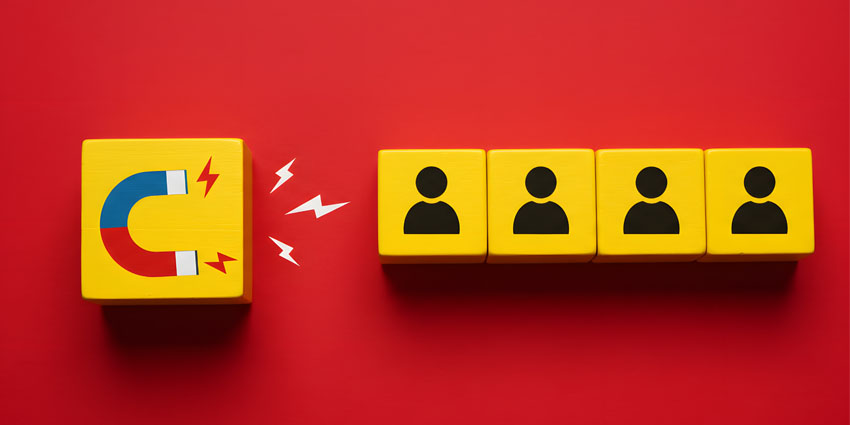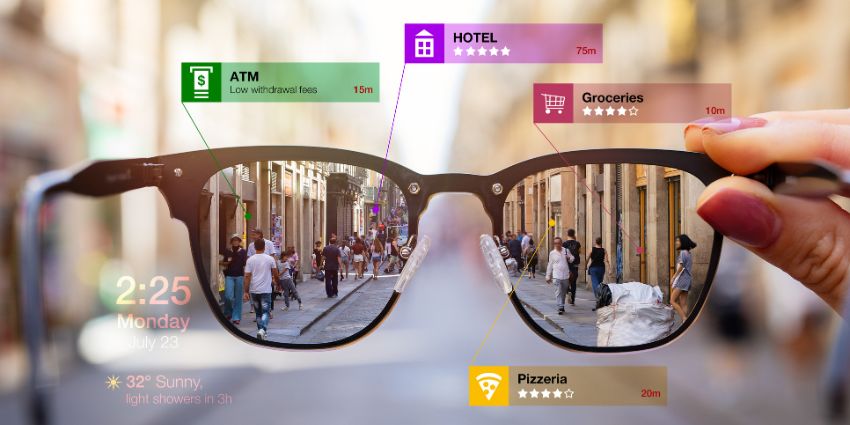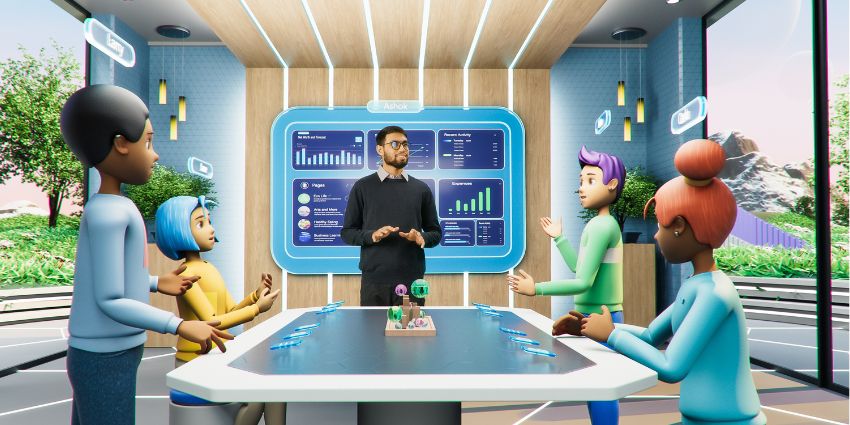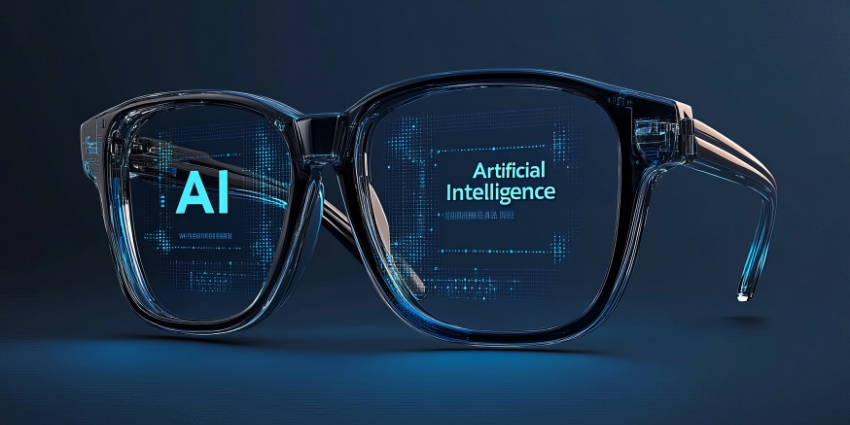Workplace management used to be about ensuring that meeting spaces weren’t double-booked and that everyone had access to a computer. Now, businesses need to figure out how to design hybrid workspaces that actually convince people to show up and stay.
One of the industries struggling the most? Big Tech. Countless tech brands, from Zoom to Apple, and even Meta, have been trying to get employees back into the office lately. After all, they need to make the most of the spaces and resources they’ve got. But frankly, it’s backfiring.
Teams are quitting at record rates, hybrid spaces sit empty, and CFOs are staring at wild energy bills and wasted real estate. The fix isn’t going to be old-fashioned perks like pizza days and free coffee. It’s going to be a smarter approach to hybrid work design, and one that actually prioritises experience.
- Workplace Experience Management Unpacked: The Ultimate Guide to Workplace Management
- The New Playbook for Measuring Employee Experience: Building Your Net EX Score
Why Big Tech Still Struggles with Designing Hybrid Workspaces
You’d think that Big Tech companies would be the trend setters in hybrid work design. We’ve all heard the stories about Google’s sleep pods and Box’s tight-knit community. But even the innovators are struggling these days.
In fact, 73 percent of Amazon’s employees said they considered quitting when the company started mandating a five-day-per-week return to the office.
So, what’s causing these companies the biggest issues right now?
- Rigid policies: The standard office environment just doesn’t work for everyone anymore. Half the time, people working in-house are just trying to “look busy”. They’re not actually getting the most out of the space. Attendance might go up, but productivity doesn’t.
- Low utilization: About 50–60 percent of desks go unused on hybrid days in tech campuses. Real estate that’s paid for, staffed, and cleaned daily just sits there. Companies end up losing money on spaces that aren’t delivering value.
- Energy and overhead overkill: AI workloads and on‑site data centres demand lots of cooling and lighting, yet without sensor analytics, offices become wasteful. This can even impact employee engagement because staff want their employers to be sustainable.
- Culture mismatch: Gen Z and newer hires have seen “perk fatigue”; they don’t rate pool tables or free breakfasts. They want purpose, autonomy, and well-being. CEOs pushing RTO without investing in spaces that emotionally and practically support employees are creating disengagement at scale.
There’s a serious gap between what big tech leaders need from employees and workplaces and what staff members will actually respond to.
Designing Hybrid Workspaces that Tech Teams Want
The era of perks is over. Free lattes and rooftop decks don’t impress tech talent as much as they used to. In 2025, Big Tech employees want agency. They want hybrid workplaces that give them autonomy, reduce friction, and support their well-being.
The good news is that designing hybrid workspaces that align with those expectations isn’t as difficult as it seems. All companies really need is the right strategy (and a little support from the right tools).
Here’s what teams really want, and how companies can deliver.
Autonomy, Even In the Office
Ask any engineering lead or product designer what’s driving their teams today, and “autonomy” will be near the top of the list. The ability to choose when, where, and with whom to work is becoming an expectation. According to Cisco, nearly 60 percent of tech workers would trade a raise for greater flexibility in managing their time and space.
Giving employees more autonomy doesn’t have to mean just agreeing to let them work from home whenever they like. But it could mean giving them more control over how they plan their schedule. For instance, with tools like Microsoft Places, employees can more effectively sync in-office days with their teammates, receive AI-powered nudges for collaborative days, and book spaces contextually based on availability and purpose.
Sometimes, it’s just about helping employees make decisions that actually benefit them and their workflows, rather than forcing them to sit at a specific desk.
Personalized Work Experiences
A key challenge in designing hybrid workspaces for big tech talent is balancing standardization with personalization. Offices are built for the “average team” or “average employee”, but the average is becoming harder to define. Some staff need silent focus spaces, others need stimulation.
One employee may prefer a bright, warm climate; another thrives in a cool, dim zone. Tech can help make spaces flexible enough to adapt to those differences. Google’s much-discussed “Campfire” rooms, for example, are a bold step in this direction, blending physical and virtual presence with circular screen layouts, adjustable lighting, and modular furniture that reconfigures based on the particular employee’s needs.
Some organizations are even beginning to experiment with AI-powered assistants that can adjust working environments for team members, changing temperature and lighting settings based on their preferences with just a voice command, or a ping from a sensor.
Meaningful Moments
Employees don’t want to come into the office just to sit at a desk. They want experiences they can’t replicate remotely, peer-to-peer connection, creative momentum, and mentorship. That’s why some more innovative tech companies are getting experimental.
Accenture is using extended reality to connect staff members across landscapes, regardless of whether they’re in the office or not, for everything from onboarding, to training, and team-building exercises. Zoom has created an “engagement hub” with 75 different workspaces intended to support different types of workers and collaborative preferences.
You don’t have to go beyond building your own metaverse or a new office from scratch. Just make sure there’s something in the workplace that your team can’t get at home.
Wellbeing-First Environments
When companies talk about employee well-being, it too often stays at the surface: meditation apps, yoga in the breakroom, generic “wellness days.” But real well-being in the workplace is infrastructural. It’s about physical comfort, psychological safety, and environments that reduce friction and support flow.
This is where AI, sensors, and ongoing insights can make the biggest difference.
At Quantum Health, for example, deploying OfficeSpace with embedded environmental tracking allowed them to optimize zones based on CO₂ levels, occupancy data, and temperature. This not only reduced energy usage but also saved them $13.5 million in unnecessary renovations by showing them exactly what spaces their staff actually needed.
Simplicity and Speed
Big tech employees don’t just want innovation. They also want simplicity. No one wants to spend an hour setting up a meeting room or tracking down an available space. Your employees want booking apps that integrate with their existing calendars and collaboration tools.
They’re looking for meeting room systems that remember and apply their preferences automatically, plug-and-play tech that doesn’t require an IT admin, and climate control options that don’t need constant tweaking.
More importantly, they’re also hoping for control, not necessarily over the space itself, but at least the tech they use in it. That’s making BYOD strategies and BYOM policies aligned with strategies for unified endpoint management and hybrid security controls increasingly important.
Best Practices: How Leading Enterprises Are Making Hybrid Work
Designing hybrid workspaces that actually appeal to Big Tech employees doesn’t have to be as complicated as it seems. It just takes a little creativity and alignment. Here are some quick tips for business leaders, ready to make the leap:
- Start Cross‑Functionally, Stay Aligned: There’s no “Facilities project” or “HR initiative” anymore; this is a shared transformation. CRE planners, IT, HR, and workplace designers have to work together and listen to everyday employees. Connect the dots, or nothing works.
- Listen constantly: Don’t wait for an employee to complain about something in an exit review. Pay attention. Track sensor data, regular feedback dropped into workplace engagement management apps, and comments from staff in booking apps. Ask directly for insights, and use them.
- Be flexible: Don’t expect one office space, schedule, or strategy to work for everyone. Let employees personalize where it counts. Standardize things like making tech simple, improving wellbeing, and enhancing the atmosphere of the workspace. Leave everything else open to changes.
Most importantly, stay experimental. In the years ahead, the workplace will only continue changing, particularly as businesses continue to roll out new forms of AI and 4-day work week experiences. Be open to testing new ideas. Use digital twins to map out new office designs or workflows. Run pilot tests on new workplace management strategies and gather feedback.
Don’t stay glued to the idea that the workplace should be a specific way.
Designing Hybrid Workplaces for the Future
The future of hybrid workplace design in Big Tech is rooted in data, human-centric design, and seamless experiences. Embracing that future takes intention. Start by assessing the workplace as it is today and gathering feedback on what team members actually want.
Pilot new programs, and use technology to help you bring them to life: unified desk and room booking systems, AI-powered applications, sensors, and analytical tools.
Then, build continuous feedback loops. Pair occupancy and comfort data with micro-surveys or Slack sentiment. Track improvements quarter over quarter, not year over year.
Nothing is guaranteed to turn the Big Tech work environment into a place your employees actually love. But at the very least, strategic experimentation puts you on the right path.







